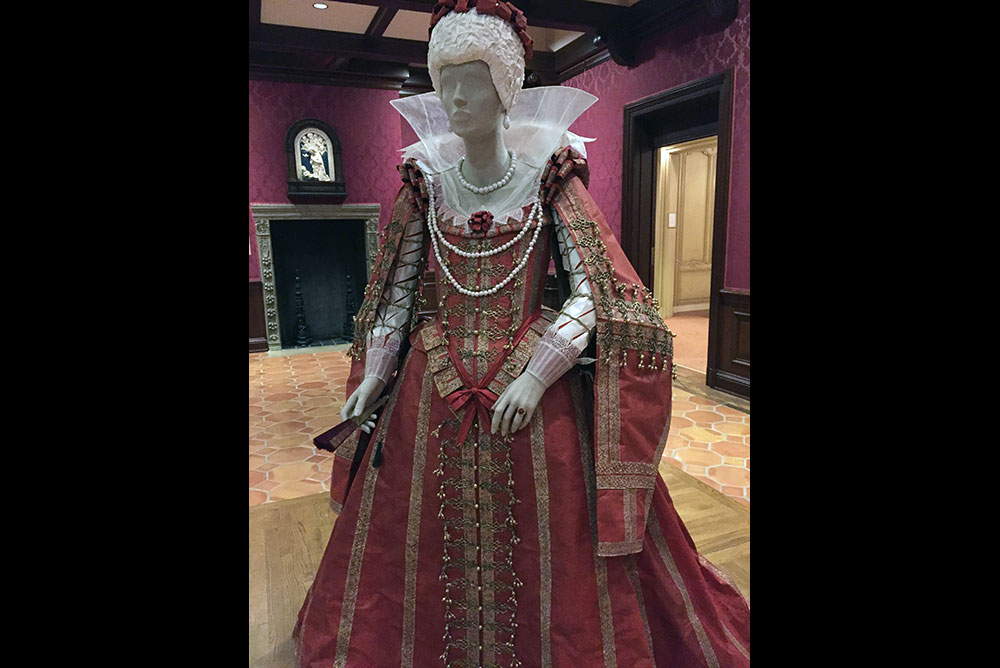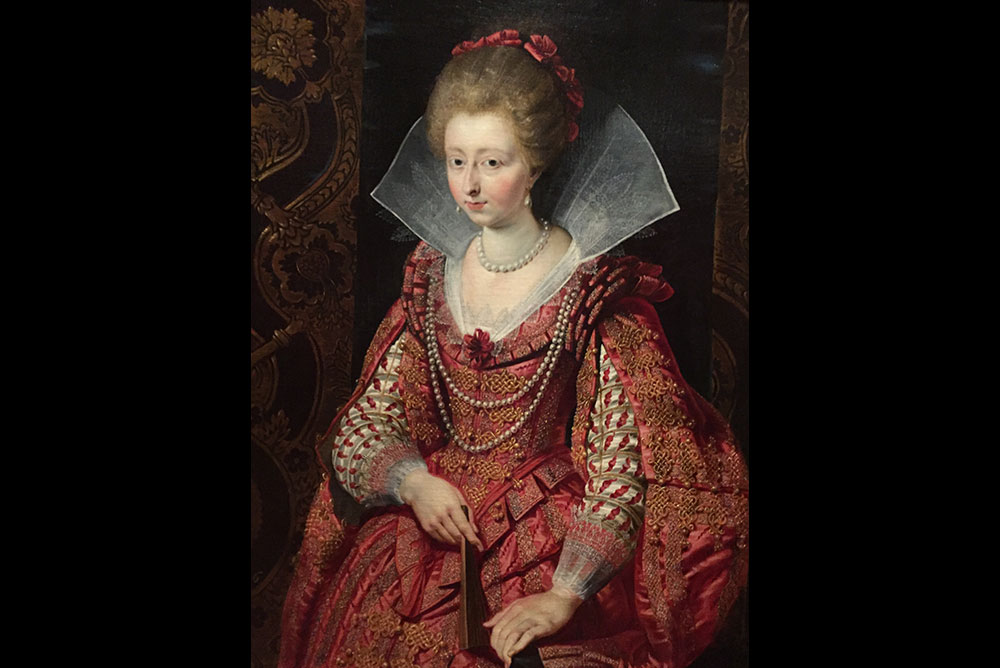
Artist Isabelle de Borchgrave’s red gown with lace, tulle multiple fabrics and lavish ornamentation is made of paper, an interpretation of the one worn by Charlotte-Marguerite de Montmorency, the Princess of Conde, in the Peter Paul Rubens portrait hanging nearby.
VISITORS TO THE EXHIBITION “The Frick Collects: From Rubens to Monet” (through May 14) may be surprised to see a life-size mannequin wearing a gown that looks remarkably similar to the one worn by a 17th-century royal princess in the Peter Paul Rubens portrait hanging a few feet away. Even more surprising though is that the lavish gown which seems to have leapt from the picture is sculpted entirely from paper.

Peter Paul Rubens, Portrait of Charlotte-Marguerite de Montmorency, Princess of Condé, c. 1610. Oil on canvas. Frick Art & Historical Center.
The Frick Pittsburgh’s retrospective “Isabelle de Borchgrave: Fashioning Art from Paper” won’t open at the museum until fall 2018. But visitors are invited for a peek of what’s to come and how Belgian artist de Borchgrave makes us believe we’re seeing lace, brocade, silk, taffeta and embroidery through cutting, gluing and using a mix of acrylic paint, ink and metallic powder. In her Brussels studio, de Borchgrave directs a staff, each one specializing in a part of a costume’s creation, whether building a wire structure, painting the ground colors, crafting jewelry or cutting trimmings.
The Frick is not alone in calling on the talents of de Borchgrave to illuminate their collection. In June 2012, Washington D.C.’s Hillwood Museum commissioned a similar exhibit, “Prêt A Papier.” For that show, the sumptuous apparel of the royalty of the 18th and 19thcenturies depicted in the paintings and decorative arts Marjorie Merriweather Post collected, came to life, for example, in the costumes of Tsar Peter the Great and Empress Josephine. De Borchgrave’s own intricate painting and manipulation of the paper convincingly mimicked the finest brocades, damasks and silks.
From strictly a fashion point of view, it’s evident in the Rubens portrait and in de Borchgrave’s realization of the princess’s gown how designers have dug deep into the history of costume and how the styles of the past infuse modern clothing. Note the slashed sleeves of Princess Condé’s gown. Slashes and cutouts of geometric shapes appear in a variety of clothing today, from deconstructed blouses to dresses with slits to distressed anything. Lace is having a big comeback, and the trend of embellishing everything is still going strong.
Isabelle de Borchrave’s paper dress masterpiece will be on view at the Frick Pittsburgh through August. It will then join the touring exhibit, which opens in Memphis in October. Look for it again when the exhibition opens in fall 2018.
—Janet Kelly

